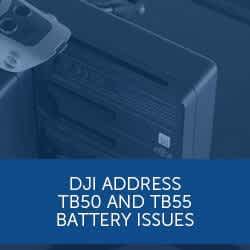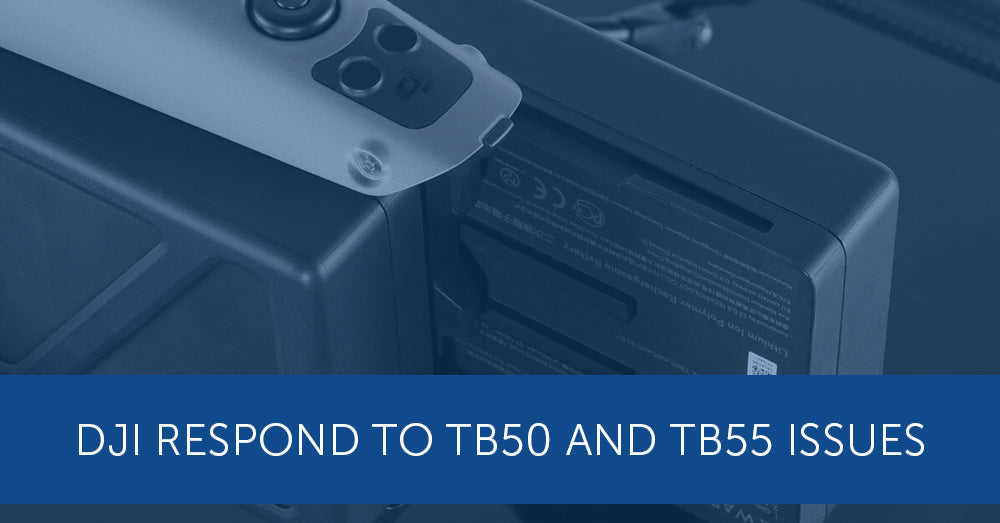
News
Published on 9 Nov 2018
James Willoughby
DJI ‘not shying away’ from TB50 And TB55 battery issue
DJI is taking the TB50 and TB55 battery issue very seriously. A firmware update will be issued late next week. A longer-term solution is being worked on. ... Read More

DJI is taking the TB50 and TB55 battery issue very seriously, saying that it has confirmed the cause of the problem and it will be fixed in two stages, starting with the release of a firmware update next week which will ensure that drones which use these batteries can fly safely again. On Tuesday, at the Heliguy Emergency Services Roadshow, in Lincoln, held in partnership with DJI, the Chinese-based technology giant announced that it is ‘working round the clock’ to find a solution to the recent issues with TB50 and TB55 batteries. Last month, there were reports that a small number of these batteries had shown incorrect power levels, leading to loss of power mid-flight. Customers were urged to fly with caution when using TB50 And TB55 (pictured below) batteries in drones. TB55.jpg Speaking at the event at Waddington Training Site earlier this week, Eduardo Rodriguez, DJI’s Enterprise Product Manager, said: “The battery team is working round the clock to find the solution as soon as possible, and we will do everything in our power to get these aircraft back in the air again. “We know that the majority of UK emergency services which use these aircraft have grounded them as a result of what has happened. “It is now confirmed that it is a software issue: the battery capacity calculation algorithm is sending wrong information to the aircraft. “The problem will be fixed in two stages. First, we will release a firmware update late next week making sure that drones can be flown safely again. "However, this firmware update is just a workaround, as it won’t fix the root of the problem. For this purpose, as we do not manufacture neither this component nor its algorithm, we are working with our supplier to come up with a solution. As of today, there is not a timeline for this, but as soon as there are more details, everyone will know. “Additionally, we are working with the Civil Aviation Authority (CAA) and providing continuous updates about our research and development process.” TB50.jpg During the roadshow, Tautvydas Juskauskas, DJI’s Public Business Development Manager for Europe, the Middle East and Africa, made a commitment that the company was ready and willing to visit any emergency-service team which had concerns. He added: “We are preparing a detailed report for public-safety authorities, as well as a solution and how it has been fixed. “This is a big challenge, but we are not shying away from it and we are working hard to fix it as soon as possible.” In the meantime, DJI has issued advice to anyone who flies drones which use TB55 and TB50 (pictured above) batteries. This advice can be found here. Following the battery issue, the CAA had announced a safety notice, to highlight the requirement for the SUA operator and/or remote pilot to be reasonably satisfied that flights can be safely made, restrict overflight of persons at any height, to temporarily limit the scope of certain operational authorisations issued to operators of the affected SUA, and to provide updated information regarding battery management requirements while the affected SUA are airborne. Last Friday, the CAA announced that it had lifted part of the restriction in relation to the affected drones. The previous suspension of permissions and/or exemptions involving operations over or within 150 metres of a congested area (e.g. as stated within a Standard Permission), or when employing Extended Visual Line of Sight techniques, has been lifted.
